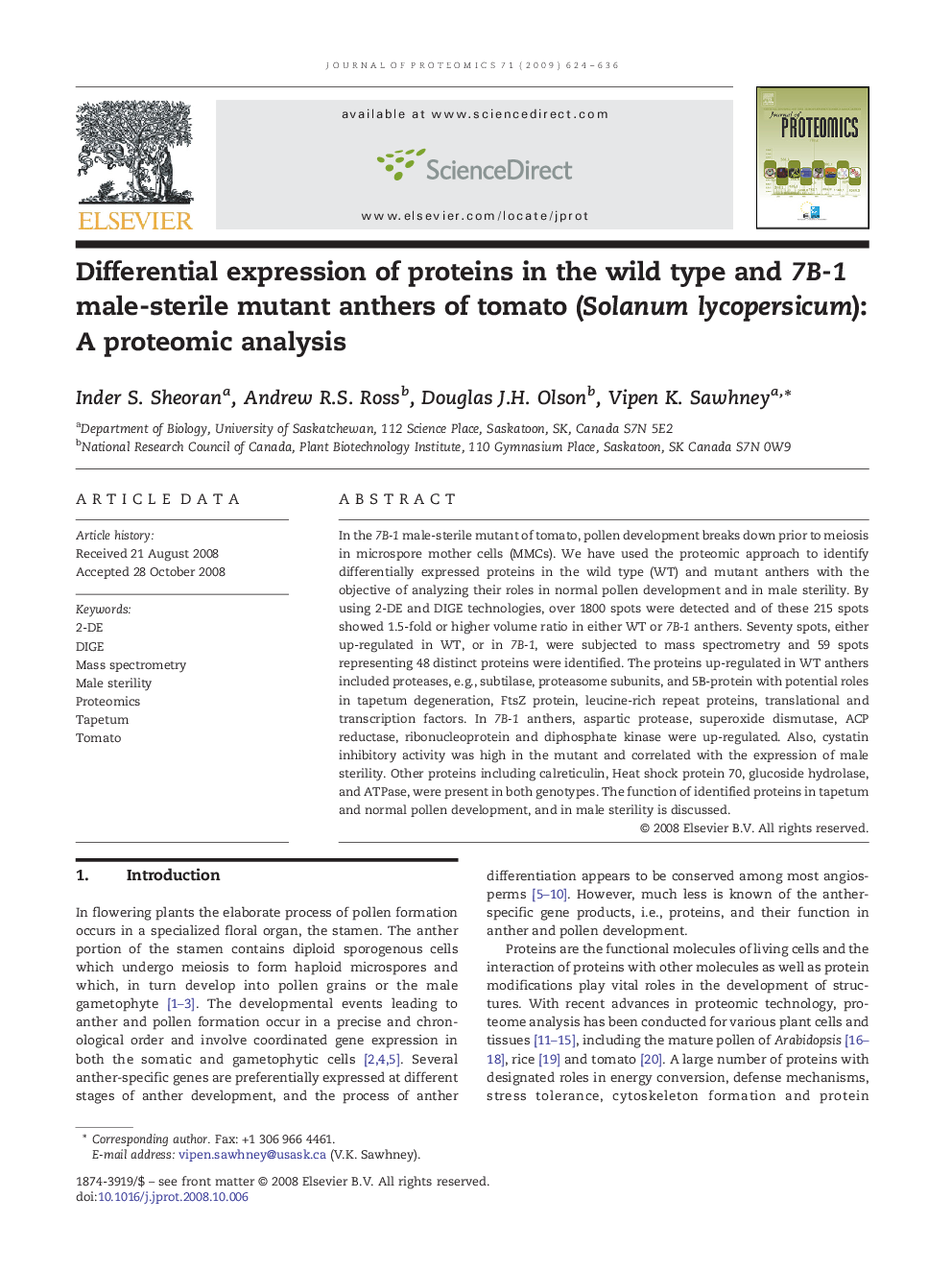| Article ID | Journal | Published Year | Pages | File Type |
|---|---|---|---|---|
| 1225974 | Journal of Proteomics | 2009 | 13 Pages |
In the 7B-1 male-sterile mutant of tomato, pollen development breaks down prior to meiosis in microspore mother cells (MMCs). We have used the proteomic approach to identify differentially expressed proteins in the wild type (WT) and mutant anthers with the objective of analyzing their roles in normal pollen development and in male sterility. By using 2-DE and DIGE technologies, over 1800 spots were detected and of these 215 spots showed 1.5-fold or higher volume ratio in either WT or 7B-1 anthers. Seventy spots, either up-regulated in WT, or in 7B-1, were subjected to mass spectrometry and 59 spots representing 48 distinct proteins were identified. The proteins up-regulated in WT anthers included proteases, e.g., subtilase, proteasome subunits, and 5B-protein with potential roles in tapetum degeneration, FtsZ protein, leucine-rich repeat proteins, translational and transcription factors. In 7B-1 anthers, aspartic protease, superoxide dismutase, ACP reductase, ribonucleoprotein and diphosphate kinase were up-regulated. Also, cystatin inhibitory activity was high in the mutant and correlated with the expression of male sterility. Other proteins including calreticulin, Heat shock protein 70, glucoside hydrolase, and ATPase, were present in both genotypes. The function of identified proteins in tapetum and normal pollen development, and in male sterility is discussed.
